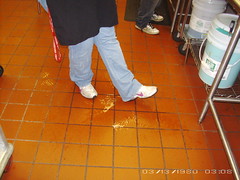The Role of Role
Morality in the North Carolina Athletic Academic Scandal
Here’s a
teachable moment. Both business
professors and students should pay close attention to the academic scandal at
the University of North Carolina where “paper” courses were offered in
disproportionate numbers to mostly football and basketball players in order to
keep them eligible to play without requiring them to attend class, read, write,
or learn anything. For years grades for
independent study classes in the Afro-American Studies Department were handed
out on a “need” basis rather than an “earned” basis by office secretary Debby
Crowder and, to a lesser degree, by department chair Julius Nyang’oro. Plagiarism was rampant. The utter lack of academic standards was
unconscionable and inexcusable. It
greatly damaged UNC’s reputation as a university that could balance successful
athletic programs with high academic standards.
The important lesson here is not so
much what happened as why it happened. A
natural conclusion might be that Crowder and Nyang’oro were corrupt, or greedy,
or just bad people. But the
recently-released 131-page Wainstein Report makes it clear that Crowder and
Nyang’oro did bad things, but not to line their pockets, or even to promote
their department. Their primary
motivation was to help the students.
Crowder’s background led her to do almost anything to help students who
were struggling, as she had once struggled herself. Nyang’oro had taught two students athletes
early in his career who had become academically ineligible and been forced to
leave school. One had soon been murdered and the other ended up in prison. Nyang’oro wished to avoid similar future
tragedies.
Crowder’s and Nyang’oro’s motives
mirrored those of the teachers and administrators at the center of the Atlanta
public school scandal that is still playing out. In Atlanta, smart and dedicated teachers
changed exam answers so that their students could pass standardized tests and
their schools could stay open. They thought
their students had worked hard and were doing the best they could, so they
cheated to prevent the students from being labeled as “failures” and having their
schools closed down. The motivation was
understandable, but people are going to jail for their actions and, like UNC,
the Atlanta school system will be under a cloud for years to come.
The notion of role morality provides some context here. Oftentimes people will do unethical things
that they would not ordinarily do because of a role they perceive that they are
playing inside an organization. They
might never lie to put money in their own pockets, but find themselves
stretching the truth so that their company can meet its profit goals. In their role as a “loyal employee,” they
give themselves permission to be dishonest.
They might never cheat to advance their own career, but they do to help
their child get into a better school than the child deserves. In their role as “loving parent,” they give
themselves permission not to live up to their normal standards.
It is obviously easier to
rationalize wrongdoing if we are doing it not to help ourselves but to help
someone else, such as our students, our friends, our family, or our
co-workers. If students understand how
role morality can make them vulnerable to taking unethical actions, they can
guard against such mistakes. It might
be helpful for them to view the educational video on role morality at my
school’s website: http://ethicsunwrapped.utexas.edu/video/role-morality. The video is easily-available, award-winning,
and, best of all, free.
Robert
Prentice
McCombs
School of Business
University
of Texas at Austin







